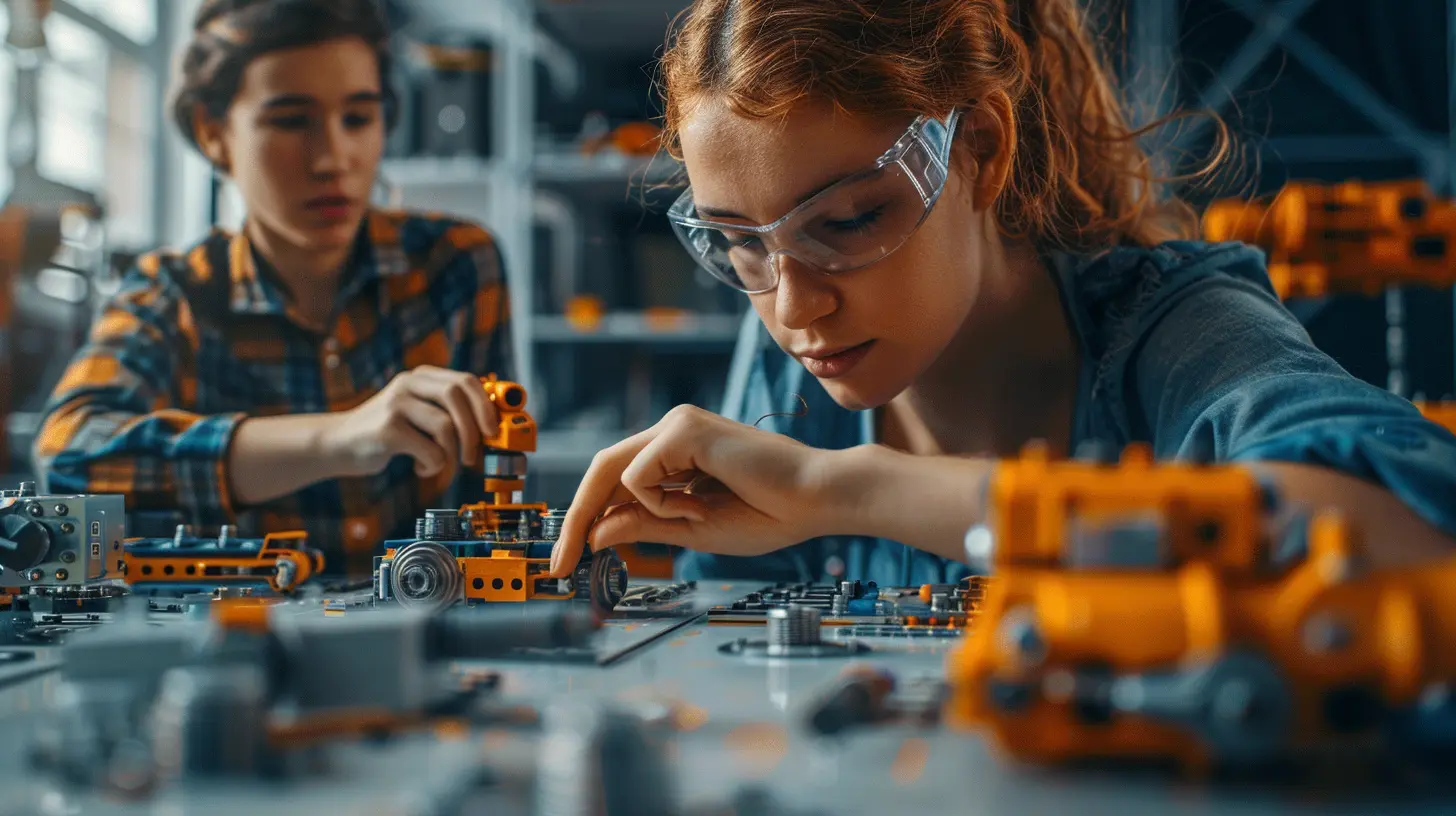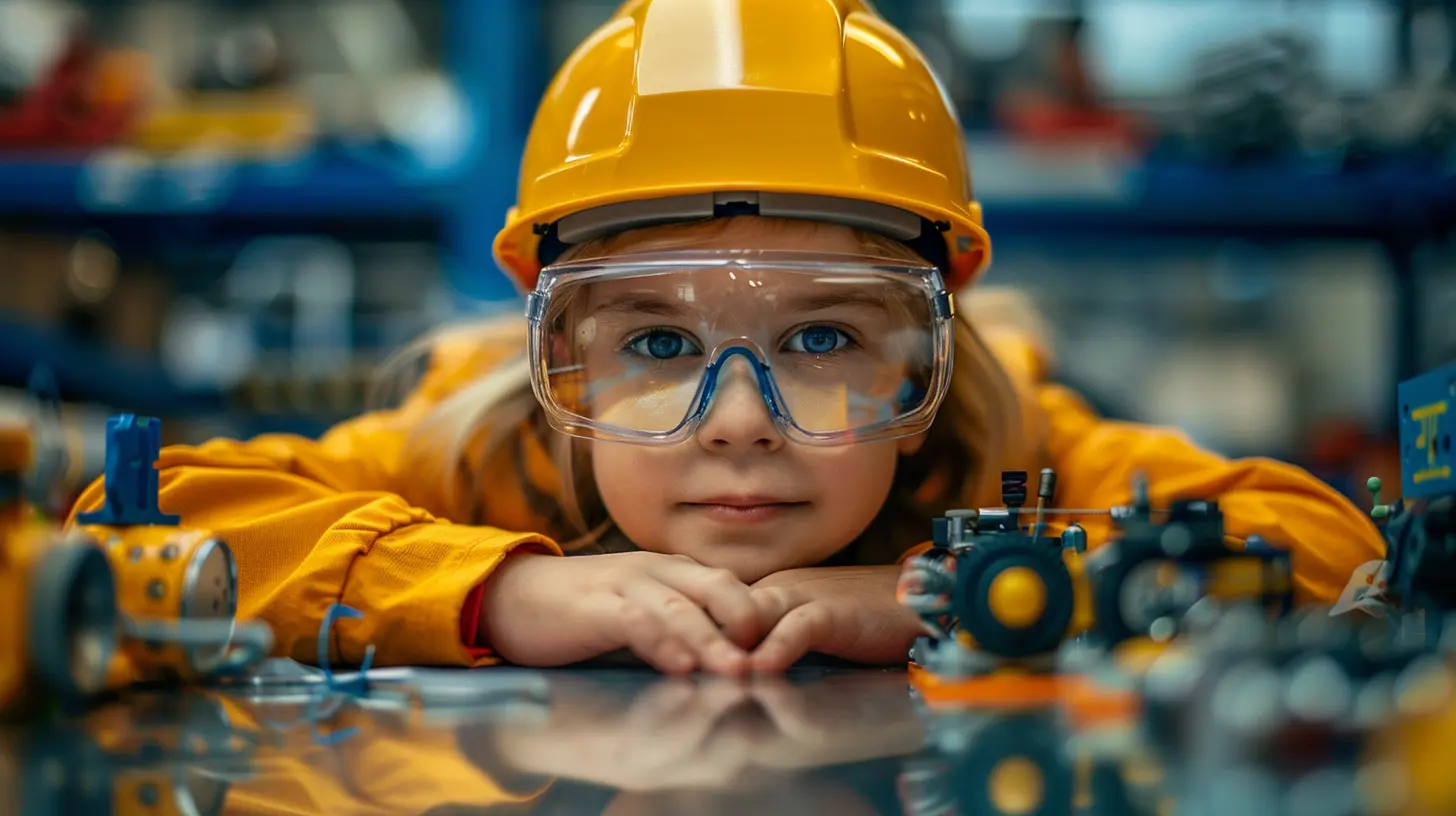How to Bring Real-World Engineering into the Classroom
15 June 2025
Let’s be honest—engineering is cool. It's the backbone of innovation. From smartphones to spaceships, it's engineers who make the magic happen. But here’s the kicker: traditional classroom instruction doesn't always match the excitement or practicality of real-world engineering. Students often learn equations and theories without understanding how they apply outside the classroom.
So, how do we shake things up? How do we turn classrooms into launching pads for future engineers? Great news—you don't need a million-dollar lab or a trip to Silicon Valley. You just need a little creativity, a dash of collaboration, and a strong desire to make learning meaningful.
In this post, we’re diving deep into how educators can bring real-world engineering into the classroom in simple, effective, and totally engaging ways.
Why Real-World Engineering Matters in Education
Let's kick things off with the obvious: theory is important, but application is everything.Textbooks are loaded with formulas, definitions, and diagrams. But unless students understand where and why these concepts matter, it all starts to feel abstract and dull. Real-world engineering breathes life into the learning process.
When students engage with hands-on challenges, design actual prototypes, or solve real community problems, suddenly Newton's laws become more than just test questions—they become tools for innovation.
Benefits of Real-World Engineering in Classrooms
- Relevance: Students see how classroom learning connects to real-world problems.- Engagement: Let's face it—fun, hands-on activities are way more exciting than lectures.
- Skill-Building: They develop critical thinking, teamwork, problem-solving, and communication skills.
- Career Exploration: It gives students a taste of what engineering careers are all about.

Start with Project-Based Learning (PBL)
You want to make your classroom feel more like a creative workshop than a lecture hall? Project-Based Learning is your golden ticket.What is PBL?
Project-Based Learning is a teaching method where students gain knowledge and skills by working over an extended period to investigate and respond to an authentic, engaging, and complex question or challenge.How to Implement It
You don’t need to start big. Begin with small projects like:- Build a bridge using everyday materials to test structural integrity.
- Design a water filter to purify dirty water using items like sand, charcoal, and cotton balls.
- Create a prosthetic limb model using cardboard and rubber bands.
These projects help students apply theoretical knowledge in creative, memorable ways.
Connect with Local Engineers and Industry Experts
Want to REALLY give students a taste of the engineering world? Bring in the pros.Guest Speakers and Virtual Meetups
Invite local engineers to speak about what they do day-to-day. They can share stories, challenges, and even bring in some cool gadgets. Don't have any local experts nearby? No problem. Use Zoom or Google Meet to connect virtually.Mentorship Opportunities
Consider pairing students with mentors in the engineering field. A monthly chat or project collaboration can give students real insight into engineering careers.
Bring Engineering Design Challenges into the Mix
The engineering design process is like the secret sauce in every successful engineering project. Why not let students taste it?What’s the Process?
1. Ask – What’s the problem?2. Imagine – Brainstorm ideas.
3. Plan – Sketch and decide on materials.
4. Create – Build your prototype.
5. Test – Does it work?
6. Improve – Make it better.
Classroom Challenge Ideas
- Egg Drop Challenge: Design a container to protect an egg from a two-story fall.- Earthquake-Proof Building: Build a structure that can handle shaking from a simulated earthquake.
- Solar Oven: Create an oven that cooks using only the sun.
These kinds of challenges make learning tangible. Students aren’t just memorizing—they’re inventing.
Use Simulations and Real Engineering Software
Software simulations are a great way to give that real-world feel without even leaving the classroom.Tools You Can Try
- Tinkercad: Great for electronic circuits or 3D modeling. It’s simple and browser-based.- Scratch & Arduino: Perfect for coding and electronics projects.
- Bridge Designer: A simple tool for designing and testing virtual bridges.
Getting students comfortable with these tools helps them develop confidence using the same platforms real engineers do.
Take Field Trips and Industry Tours
Sometimes, to get a real taste of engineering, students need to see it in action.Ideas for Engineering-Focused Field Trips
- A local manufacturing plant- A water treatment facility
- An aerospace museum
- College or university engineering departments
Can’t travel? Try virtual tours. Many companies now offer digital walk-throughs of their engineering plants or R&D centers.
Incorporate Cross-Disciplinary Lessons
Engineering doesn't live in a vacuum. It touches science, math, art, even English.STEAM, Not Just STEM
Add the "A" for Arts to create STEAM. Creativity is the soul of engineering. Encourage students to:- Sketch designs
- Present their findings visually
- Write proposals for their engineering ideas
It’s not just about building—it’s about communicating ideas, problem-solving, and thinking critically from every angle.
Encourage Engineering Competitions and Hackathons
A little friendly competition can go a long way.Benefits of Competitions
- Foster innovation and teamwork- Help students apply knowledge under pressure
- Provide a platform to showcase their talents
Some great student competitions include:
- FIRST Robotics
- Future City
- Science Olympiad
- Destination Imagination
If none are available locally, start your own mini challenge in class or after school!
Bring Problem-Based Real-World Scenarios
Throw students into a "real" crisis—they’ll love it!Example Scenarios
- “The city’s water pipes are failing. Design a low-cost fix.”- “A village needs a new bridge that can be built with local materials.”
- “Create a product that reduces plastic use in everyday life.”
These scenarios push students to research, brainstorm, test, and revise. Just like real engineers!
Use Everyday Items for Engineering Projects
You don’t need fancy equipment to teach engineering. Sometimes a pack of straws, some rubber bands, and a few paper clips can do wonders.Quick DIY Project Ideas
- Pasta Bridges- Paper Roller Coasters
- Mouse Trap Cars
- Balloon-Powered Vehicles
These activities use accessible materials and still introduce students to fundamental engineering principles—force, motion, balance, etc.
Foster a Growth Mindset
Finally, let's talk mindset.Engineering involves failure—lots of it. Teach students to see failure not as the end, but as a step toward success.
What You Can Do
- Celebrate failed attempts—the effort counts.- Encourage “iteration”—make it, break it, fix it.
- Showcase real engineers who failed before succeeding. (Hint: most of them!)
When students learn that even the smartest engineers mess up, they’ll feel more confident taking risks themselves.
Integrate Engineering into Everyday Subjects
Yes, you can sneak engineering into just about any lesson.Math: Use real data to design and build structures.
Science: Explore energy transfer by building Rube Goldberg machines.
History: Recreate ancient inventions like aqueducts or catapults.
Language Arts: Write a report or persuasive piece about an invention.
Engineering is inherently interdisciplinary. Use that to your advantage.Final Thoughts
Bringing real-world engineering into the classroom isn’t just about building cool stuff (though, let’s admit, that’s a fun part). It’s about reshaping education to be more hands-on, student-driven, and connected to life outside school walls.You don’t need to be a professional engineer to spark that curiosity—you just need the willingness to dive in with your students. With a little imagination and a problem-solving mindset, your classroom can be a launchpad for the next generation of thinkers, creators, and world-changers.
So go ahead—unleash the inner engineer in your students. You never know, the next Elon Musk might be sitting in your second row.
all images in this post were generated using AI tools
Category:
Stem EducationAuthor:

Monica O`Neal
Discussion
rate this article
2 comments
Orionyx McSweeney
Incorporating real-world engineering into classrooms inspires creativity and critical thinking, preparing students for future challenges and innovations. Great insights!
June 23, 2025 at 4:12 AM

Monica O`Neal
Thank you! I'm glad you found the insights valuable. Engaging students with real-world engineering is essential for fostering creativity and problem-solving skills.
Regina McFarlane
Bringing real-world engineering into the classroom enhances student engagement and understanding. Incorporate hands-on projects, collaborate with local engineers, and use technology to simulate real challenges. This approach not only makes learning relevant but also inspires students to consider careers in STEM fields.
June 18, 2025 at 4:37 AM

Monica O`Neal
Thank you for your insightful comment! Incorporating hands-on projects and collaboration with local engineers is indeed a powerful way to engage students and inspire them in STEM. Your suggestions will greatly enhance our approach to real-world engineering in the classroom.


